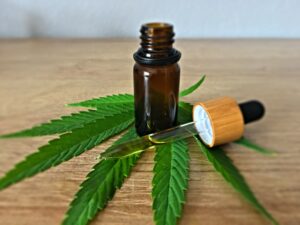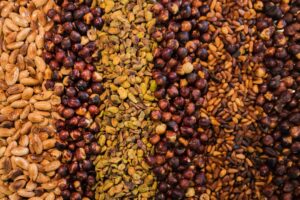
Severe throbbing pain on one side of the head is categorized as migraine, and this pain could be so intense that one’s daily life routine can entirely change. The migraine attacks are often accompanied by nausea and vomiting. However, some other symptoms of migraine include tingling in a leg or arm, visual disturbance, and difficulty in speaking. As it is mentioned above, migraine is severe pain on one side of the head, and some doctors say that it can be on both sides as well. Moreover, the migraine attacks last for more than seventy-two hours, according to some researchers. Some studies show that migraine attacks vary from person to person since it affects every individual differently.
The causes of migraines are still unclear, but some suggest that genetics appears to play a vital role. A study reports that an imbalance in brain chemicals cause migraine. Furthermore, malfunctioning of the neurotransmitters such as calcitonin gene-related peptide (CGRP) and serotonin can be behind the pain of migraines.
However, there are some migraine triggers that make the pain worse. If you’re not careful about them, then you are more likely to suffer from migraine pain. Researchers have concluded that sleep disorders, stress, alcoholic drinks, medications (contraceptives & vasodilators), and food additives (aspartame & monosodium glutamate-MSG) can be a triggering factor for migraine. Moreover, intense depression and anxiety can also be migraine triggers. If you’re looking for the treatment, then you can consider natural remedies since they have few adverse side effects on your health. This article is going to tell you about six natural remedies to treat migraines.
Ginger:
Ginger’s anti-inflammatory properties make it ideal for the treatment of migraine. Not only herbalists but naturopathic doctors recommend the use of ginger as well. However, the question is how ginger can be used for migraine pain? The naturopathic doctors suggest that one can apply ginger-root paste on their forehead.

On the other hand, herbalists recommend ginger tea for treating migraine attacks. It doesn’t matter if you drink ginger tea or apply ginger-root paste. Keep in mind that ginger can help you cope with migraine attacks. It can also reduce the symptoms of migraine since it has anti-inflammatory properties. Furthermore, you can also use diluted ginger oil and massage it on your forehead.
CBD Oil:
CBD is a cannabinoid that is found in marijuana or cannabis plants. It is an active ingredient derived from hemp plants, and it may be beneficial for health problems. There are some drugs that contain CBD, and these are used for treating depression, anxiety, and stress. As we know, chronic depression and stress are migraine triggers, so CBD may help you reduce migraine pain by alleviating the symptoms of stress on your life.

However, a clinical study reported that CBD oil contains THC (another cannabinoid), which may better produce migraine pain relief. Some migraineurs who have used CBD oil are now advocating the use of CBD oil for migraines.
Peppermint Oil:
Peppermint oil is considered useful for treating severe headaches since it has menthol in it. A study conducted by the Comparative Medicine Research Center and Department of Neurology at Shiraz University of Medical Sciences reported that the active ingredient “menthol” in peppermint was found beneficial for the treatment of migraine and severe headaches. This study also talked about the history of the use of menthol for headaches and intense pains. Some doctors suggest that you can apply peppermint oil (menthol solution) to your forehead to reduce the symptoms of migraine attacks.

Magnesium in your diet:
Lack of magnesium in your body can cause hypokalemia (low potassium), body aches, headaches, and even migraines. Moreover, it can cause neurological and cardiac manifestations as well. Magnesium deficiency can lead to migraines, though few people know about it. Adding magnesium to your diet may reduce headache, but should be discussed with your physician.

Magnesium is found in some foods that you can eat and add to your diet. These foods include milk, eggs, Brazil nuts, almonds, sesame seeds, cashews, peanut butter, and oatmeal.
Lavender Oil:
Lavender oil can reduce migraine pain as well. It’s often used to treat different sleep disorders. Some people inhale lavender oil since its fragrance provides peace of mind and calmness. On the other hand, some apply it to the area where they feel pain.

Acupressure:
You may have heard about acupuncture, but acupressure is different from it. Acupressure deals with the pressure points in our bodies. The acupressure practitioners apply pressure to specific points with hands and fingers to relieve pain from the body. However, it not only provides relief to body aches, but it can also reduce headaches and migraine pain. There are some points in our bodies, which have a significant effect on our brain. Therefore, acupressure can ease migraine attacks. A study reported that acupressure reduces migraine-related nausea as well.

Migraine is a severe problem for many people. The natural remedies mentioned above can be effective for the treatment of migraine. Talk to your doctor or healthcare practitioner about these integrative therapies that can lessen migraine pain and improve the quality of your life.
—
Author Bio:
Currently a student of English Literature, in her final years, Carolina Martel is passionate about writing her thoughts in words. She takes up writing projects in her leisure time to accompany her studies. Generally, she understands the essence of writing on every topic but especially those that relate to her field. She regularly writes at https://shadedco.com/.
